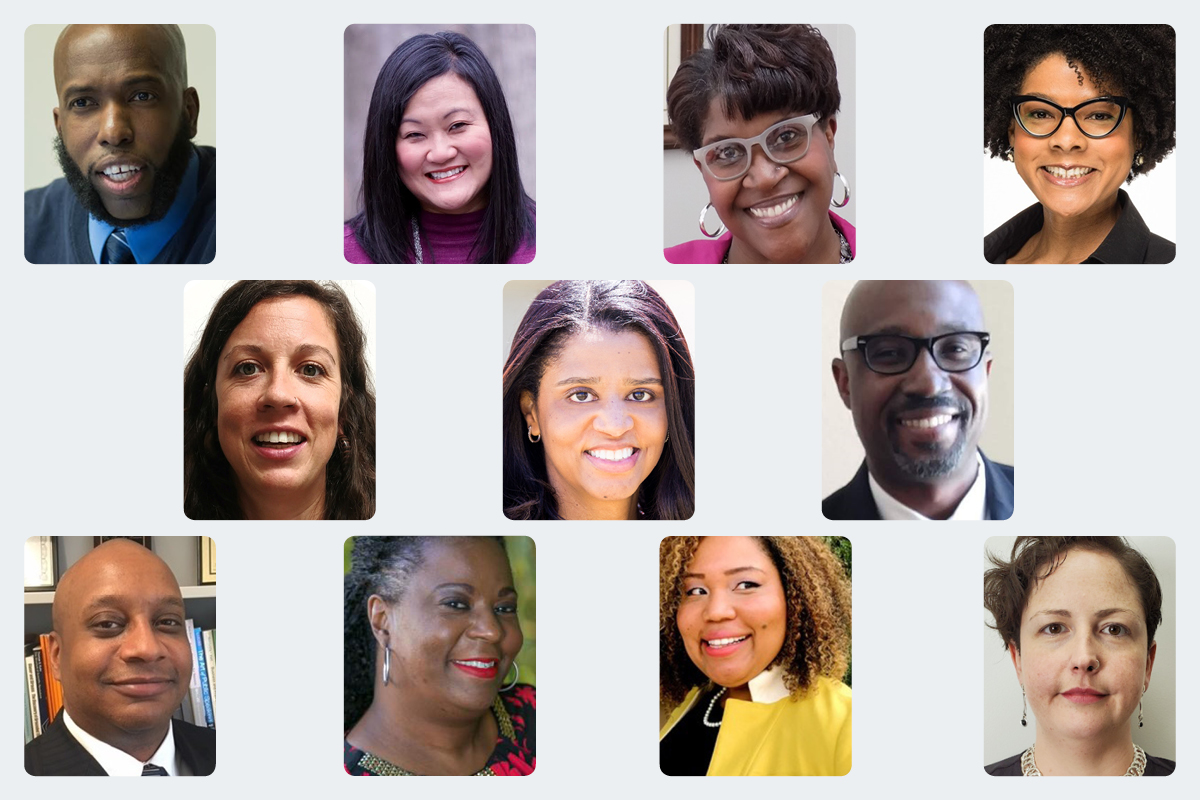Development Matters
Principles for Diverse, Equitable, Inclusive, and Culturally Responsive and Sustaining (DEI+CRS) Learning Materials
A textbook is more than just a curated collection of scholarship—it is a community of voices who contribute to it, an editorial process that hones it, and ultimately, a dialogue with the students and instructors who encounter it. So what voices are included in your learning materials? What standards are being used to combat bias? What methods are being used to help students see themselves in the material? At Macmillan Learning, we hear you. That is why our communication and college success teams are opening up our process and products to be more transparent. At the heart of this transparency is putting into words and sharing with you how we describe our editorial purpose: our principles for diverse, equitable, inclusive, and culturally responsive-sustaining learning materials.
Our process for developing learning materials is grounded in three principles:
- (1) Diverse voices in an inclusive development process
- (2) Editorial standards that combat bias
- (3) Learning rooted in lives, experiences, and culture
Principle 1
Diverse voices in an inclusive development process
Learning materials are a reflection of the voices that are included in the development process. Effective textbooks are the product of diverse and inclusive communities, built at every stage of development, from author voices and editorial decisions to the review program and input from students and instructors.

New Authors and Contributors
Diversity on teams can combat bias and foster innovation. Inclusively bringing on new authors, co-authors, and/or contributors make our products better (such as how new co-author Kelly Morrison helped make Reflect & Relate the first interpersonal communication text with an entire chapter on gender and communication.) There are many historically excluded voices in the educational publishing industry, and including new voices can promote equity and is fundamental to our principles.

Cultural Inclusivity
We see authors’ own cultural backgrounds as assets in the development of learning materials. It is not uncommon for authors in our texts to share their own cultural backgrounds and relate the content to them (such as co-author Joe Tuman sharing his own experience as the son of Iranian immigrants in this sample special occasion speech at a naturalization ceremony in Speak Up.) Diversity, cultural self-awareness, and critical self-reflection are important qualities for our authors bring to their work.

Editorial Board
The Editorial Board consists of a group of experts and advocates for inclusive learning. The board has convened multiple times since 2018 to provide new perspectives and voices in the development of some titles, which has helped guide change to our overall publishing process. Our authors and editors work to include all of their recommendations and perspectives in the final work.

Diverse Scholarship
Every Macmillan Learning textbook is full of voices—not just of the authors, examples, reviewers, and users, but also of the scholars in the discipline whose work is explained, applied, and referenced on nearly every page. By regularly revising and updating our texts, we are able to incorporate new scholars from a variety of backgrounds to provide a diverse, inclusive, and equitable approach to scholarship in our learning materials.

Review Program
The heart of any publishing program is its review program, where the publisher collects input from instructors and users in the development of learning materials. In 2018, Macmillan Learning’s communication and college success team began changing its review process by introducing a set of questions about diversity, inclusion, and culturally responsive pedagogy. In addition, Macmillan Learning created a set of best practices to help our editors inclusively gather input from a diverse pool of reviewers to support more inclusive and equitable content, pedagogy, and scholarship.
Transparency
In order to make our development process more inclusive, it also has to be more transparent. Transparency invites the larger community of instructors, students, and others into a conversation with us—so that we can advance our collective understanding of diversity, equity, inclusion, and culturally responsive and sustaining pedagogy. This web project, which contains a number of resources detailing our development work (such as editor Will Stonefield providing a behind-the-scenes look into the development of Choices & Connections) is fundamental to our commitment to transparency.
Principle 2
Editorial standards that combat bias.
A successful publishing process relies on critical self-reflection to bring to light implicit bias that can exclude or harm a student’s educational experience. Key checkpoints and standards ensure critical self-reflection is fundamental to the development process, in order to create an inclusive, positive learning experience for all students and instructors.

Development Checklist
In early 2020, Macmillan Learning created a content development checklist, codifying a set of editorial practices to help eliminate bias and foster inclusive pedagogy in the development of all its learning materials. These practices outline not just inclusive reviewing, but also budgeting early in the process to fund this work.

Style / Usage Guidelines
In Fall 2020, Macmillan Learning worked to create its first ever Diversity, Equity, & Inclusion Usage Guidelines. This was the product of a monumental cross-discipline and cross-functional effort, and serves as an important guide to ensure consistency and accuracy across our future work. The purpose of these guidelines is to educate and provide a decision-making tool for editors and content managers and give specific recommendations about words or terms that may come up in work across disciplines. Because language is changing and growing, the guide will be a living document that will be reviewed quarterly and revised annually.

Illustration Guidelines
Photos, art, and cartoons used to illustrate concepts are some of the most powerful media in learning materials, and so it is essential that they are created, chosen, and/or presented with diversity, inclusion, and critical self-awareness in mind. When making decisions, editors are supported by several sets of guidelines to combat bias and promote inclusion. When working with third-party agencies and artists, Macmillan Learning continues to advocate for more diverse and inclusive representation.
Principle 3
Learning rooted in lives, experiences, and culture.
Education is a communicative process, and classrooms are sites of intercultural exchange. Knowledge is constructed through that communication and exchange. Inclusive and culturally responsive-sustaining learning materials are not merely opening up access to education, they are constitutive of education itself.

Positive Modeling
Learning is the product of effectively modeling behavior for students, who then observe and imitate the behavior (following Bandura’s Social Learning Theory, represented here in this illustration from Speak Up). Positive modeling involves intercultural interaction, and so needs to be diverse and inclusive in order to be effective and equitable. Diverse and inclusive modeling is the foundation of learning in our framework.

Inclusive Examples
Knowledge is contextual, in that it is constructed through engagement with real life situations. That is why it is important learning materials situate concepts and skill-formation within real world, contemporary, and diverse contexts (such as the example of Ieshia Evans in Speech Craft.) Our learning materials include diverse, inclusive, and culturally relevant people, events, and observations that challenge and engage students to drive learning.

Relevant Application
The aim of education is ultimately self development. Within our framework, learning materials are designed to help students develop skills for setting and achieving communication goals (self-efficacy). Culturally relevant scenario activities, scaffolded practice, and alignment to college, career, and life goals (such as in the Advance the Conversation activities in Choices & Connections) help students develop into self-efficacious learners.
Featured Learning Materials
Our principles have been honed through the development of each edition of learning materials from Macmillan Learning, in communication and college success. We believe these texts featured here reflect and honor these principles.











